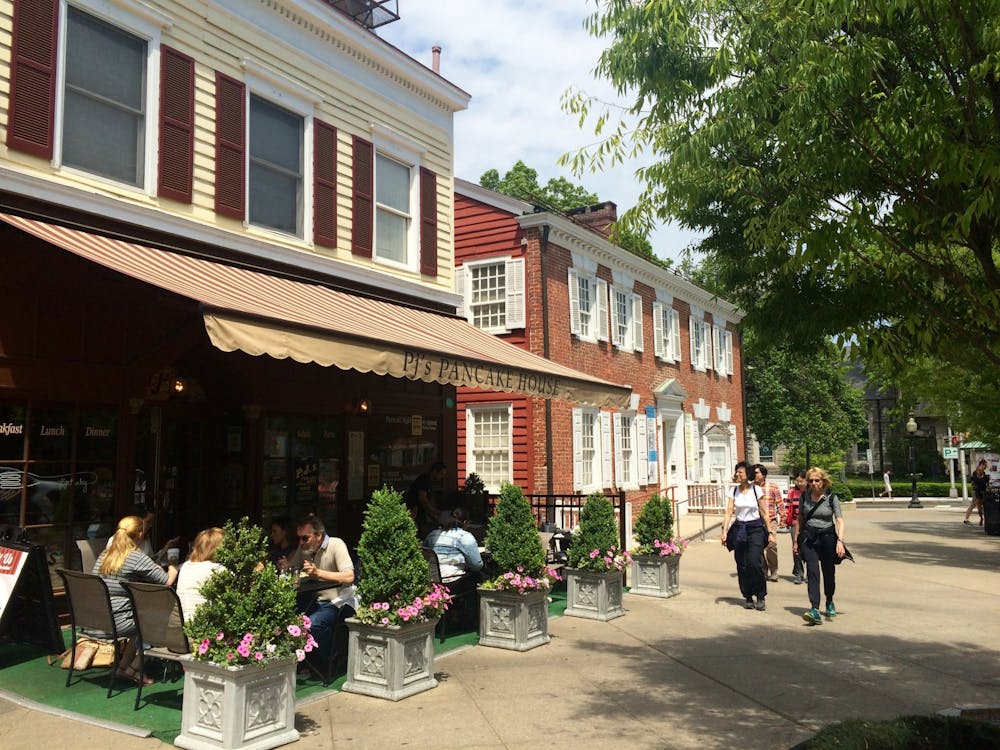Last semester, I directed a production of Shakespeare's "Titus Andronicus" for the Princeton Shakespeare Company and found myself faced with the same problem that every artist faces sooner or later: a frightening lack of resources.
The maximum possible budget that the Shakespeare Company could provide for the production was $3000; at the same time, Richardson Auditorium, the venue for the production, was estimating a bare minimum of $3500 in expenses just for the use of the performance hall. We began the production process with a $500 deficit, and we hadn't yet given a thought to making costumes, buying props, printing posters or any of those other expensive things that go hand-in-hand with mounting a full-scale theater production.
When I realized the dire straits of our financial situation, I reacted with confusion.
"Here we are at Princeton University," I remember saying to a friend, "arguably the most important institution of education in the world and without a doubt one of the wealthiest; and the Shakespeare Company — the only organization exclusively concerned with producing the works of the most important writer in the English language — has barely enough money to produce two shows a year, each with a budget of only $3000. How can that be possible?"
Those of you who read my last "State of the Arts" installment know that in about 1000 words I arrived at this rather unsurprising conclusion: at Princeton, as in the world beyond, people who aren't interested in art . . . aren't interested in art. That is, while athletic events, parties, video games and other pastimes enjoy a fairly widespread popularity, the only people who go to the theater are "theater people," and the only people who go to orchestra concerts are "music people."
Perhaps because of this apathy toward art from the student body, at Princeton (again, as in the world beyond) the arts receive very little in the way of funding.
At this point in Princeton's history, this might seem like an odd complaint. After all, it was only a few months ago that the new Berlind Theater opened, a $14.1 million dollar expense shared by Princeton and the McCarter Theatre Center.
But compare this to the $50 million Carl Icahn Laboratory that opened last May and includes, among other amenities, a café, a tremendous Frank Gehry sculpture and 31 vertical louvers that follow the sun during the seasons and are patterned to cast a shadow of a DNA-helix on the atrium floor.
In a way, comparing these two sums is comparing apples to oranges; there can be no doubt that genomics research is a more costly — and arguably, more pressing — enterprise than art-making. But I can't help wondering what makes the study of Genomics so pressing as to warrant a café, a Frank Gehry sculpture and 31 vertical louvers.
Couldn't that money have been spent bolstering the theater and arts faculty? If other arts related departments are like the Program in Theater—its faculty has been almost entirely depleted by sabbaticals this term—they would certainly appreciate more teachers. Or couldn't some of those funds have gone toward fostering student music appreciation, seeing as how currently none of Princeton's sundry a cappella groups receive University funding?
However, the lack of resources for artists on Princeton's campus is not necessarily all bad. If I learned anything from my experience with "Titus Andronicus," it was how to put on a full-scale artistic work with almost no budget. Acquiring this skill, which is invaluable in the world beyond Princeton, would not have been a concern of mine had the University provided me with all the finances I needed. Because funding the arts is not a priority in "the real world," Princeton artists ought to take the lack of resources available to them as a blessing in disguise, a unique training in preparation for things to come.
However (as I argued in my last article, which tackled apathy toward the arts), just because some social problem exists in the world outside of Princeton, that doesn't mean we ought to be unconcerned with its existence within Princeton. Again, in my opinion, what we ought to do is learn from the adversity we encounter both here and elsewhere, while also asserting our opposition to it.








